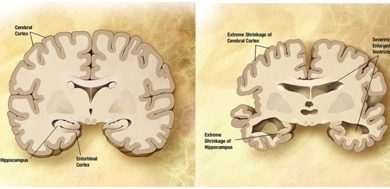Causes of hamstring injury
A hamstring injury can occur in any setting, we are working, playing sports, or any of our daily activities.
Definition
A hamstring breakage of the fiber bundle of one or more muscles. This in turn has different degrees depending on the direction and area encompassing such breakage.
Fibrillar breaks can lead to vascular rupture and hematoma appearing which will emerge during the process since the break occurs until healing. The location can be any muscle and may occur at any time of stress or muscle tension to contract.
We can see that a hamstring injury can occur in any area. We can “break us” we are working, playing sports, or any of our daily activities. Depending on the gravity of the rupture we differentiate three types: microrrotura, partial rupture and total rupture.

Causes of hamstring injury
Although, as we said, everyone can suffer a hamstring injury, there are activities where this injury is more prevalent such as contact sports, racing, soccer and working environments prone to stress during execution.
The area where more lesions exist, in seemingly harmless sports, simple rules, low physical demands, such as the paddle, which reach people without physical form whatsoever, without stretching or prepare and thinking it’s a friendly sport without danger. For today generates a wide range of injuries to people who have no habit of exercising regularly.
Overall an excellent form also makes the muscle is subjected to a pattern of high intensity and broken fiber, in the case of football players and athletes.
There are many values to consider when looking for the cause of the hamstring injury that determine the quality of our muscle fibers: training, stiffness, levels of elastin and collagen, circulatory quality, hydration, smoking, the obesity…
A very important detail is the PH (potential hydrogen) muscle. The more alkaline our muscles are, the greater the strength of the fibers that form. The optimum pH value would be between 7’0 and 7’1, even if we are not alkalizing these values can improve our diet and good habits of rest and exercise.
Stretching and daily moderate exercise are essential to prevent muscle fiber breaks and injuries in general.
You may also like to read another article on MenHealthCare: What is rhabdomyolysis? Causes, symptoms and treatments
Symptoms of fibrillar breakages
As we have already said, there are three types of hamstring injury:
- Micro break: is perhaps what is most commonly seen. The person describes a sharp and sudden shooting pain as a “stoning” as a result of which no functional impotence of muscle, slight edema and a small hematoma that progressively emerges. It produces tenderness, worse with movement and improves with rest.
- Partial rupture: is considered the next step to fiber breakage. It can be detected via ultrasound and is measured in millimeters or centimeters depending on their size. In this injury we can find hematoma and edema and systematically, and palpation find the hollowness that produces discontinuity. It produces very sharp pain, almost total functional inability of the affected muscle and needs surgical assessment.
- Total rupture: total separation from the break area with retraction and separation (such as a spring) of the separate parts. It produces a total lift of the affected muscle pack, total functional failure and need surgical repair in most cases.
Treatments
It seems we have seen that both excess and lack of muscle tone can be broken fiber and muscle, so we conclude that on balance this prevention and ensuring no injury.
In most cases hamstring micro rest, cold and analgesia in the first three to five days are required. A pressure with intent to bring the fiber and unite, bandage collaborating in the effort to make cell regeneration of muscle fibrils. In the resolution phase hydrotherapy contrast it appears to be effective as well and are frequent wrappers with clay and essential oils to regenerate tissue using osmotic paper a few hours.
In partial tear and need for medical diagnosis we found that dimensione injury. As measures systematically bandage, ice and rest of not less than 10 days to see how it evolves. In the resolution phase they may be indicated massages and recovery, but until then massage is contraindicated.
In the case of total rupture it makes surgical and rehabilitation required intervention with physiotherapy for several weeks.
The displacement currents produce three different effects:
- Increasing microcirculation.
- Vasodilation.
- Increase in the internal temperature.
Where manual treatments and alternative therapies have no place are especially phytotherapy, kinesiology, homeopathy and acupuncture as an adjunct in the phase state and resolution.
But above all we must emphasize prevention taking into account: diet, warming up, stretching, a healthy lifestyle, weight control …



